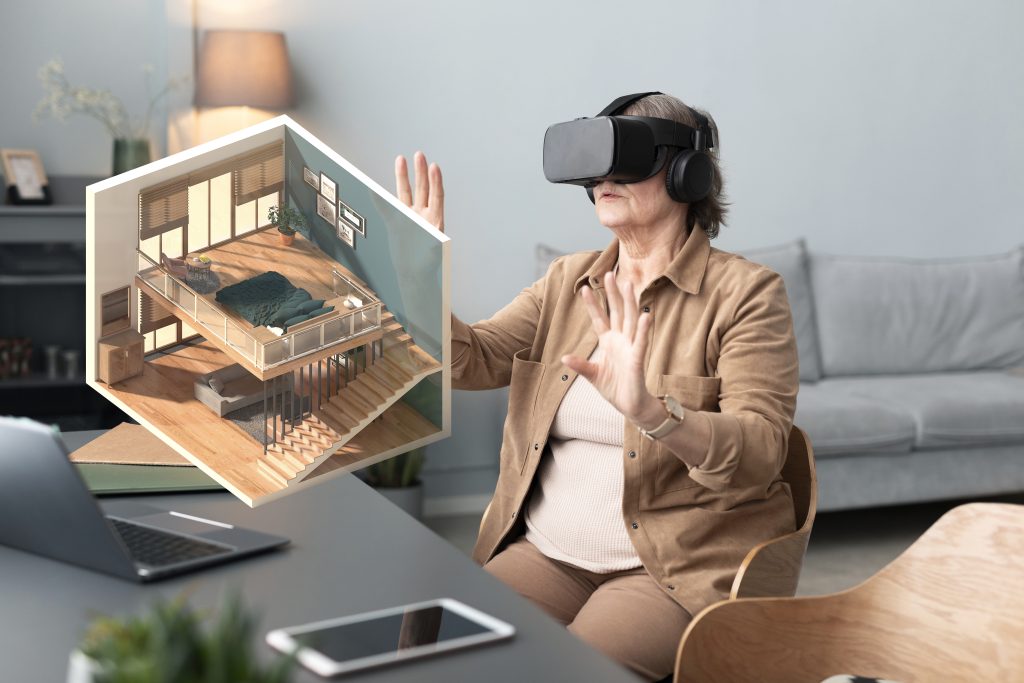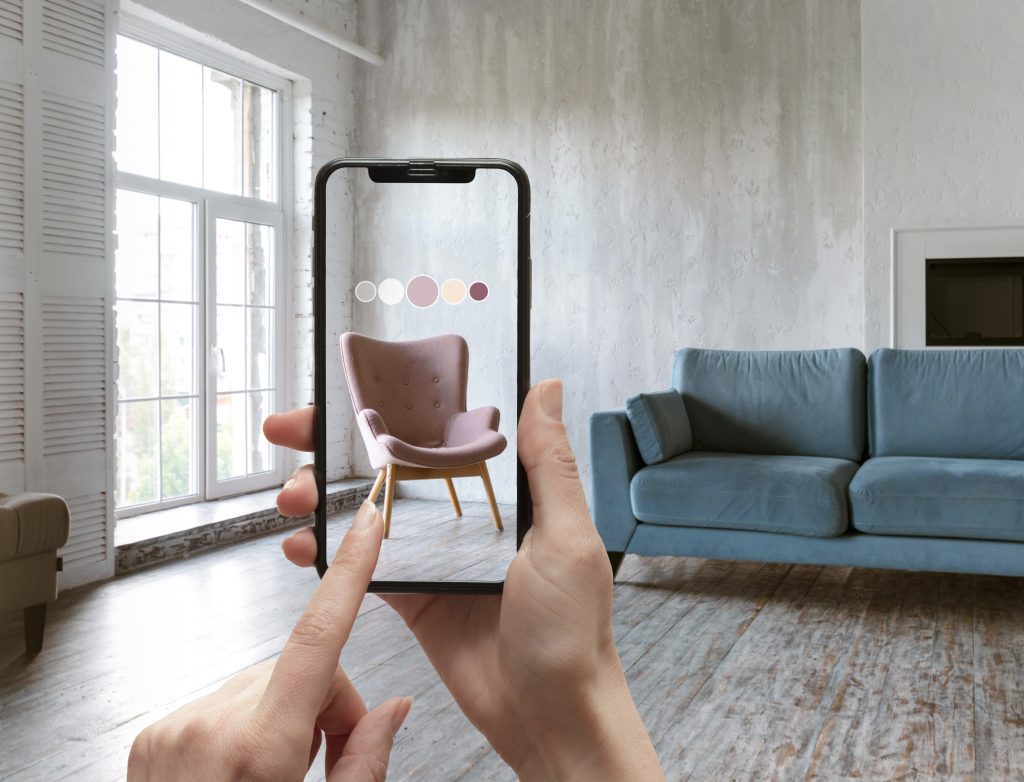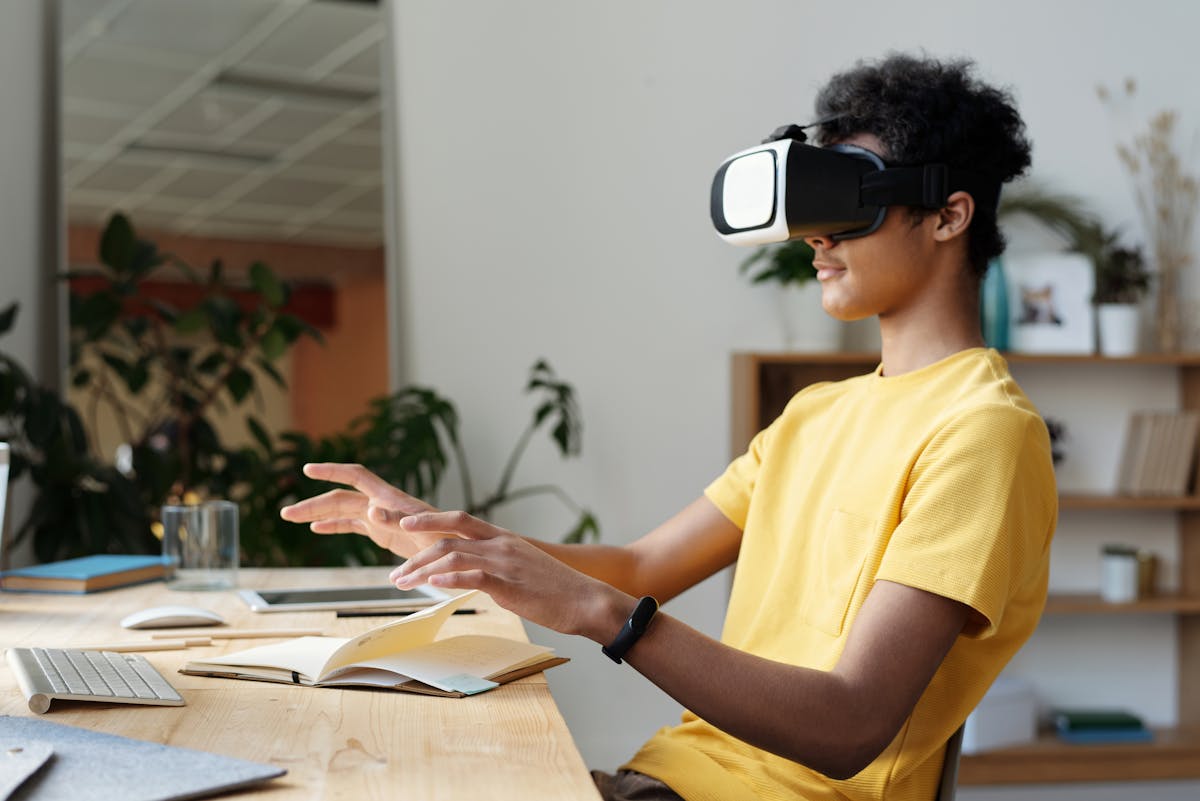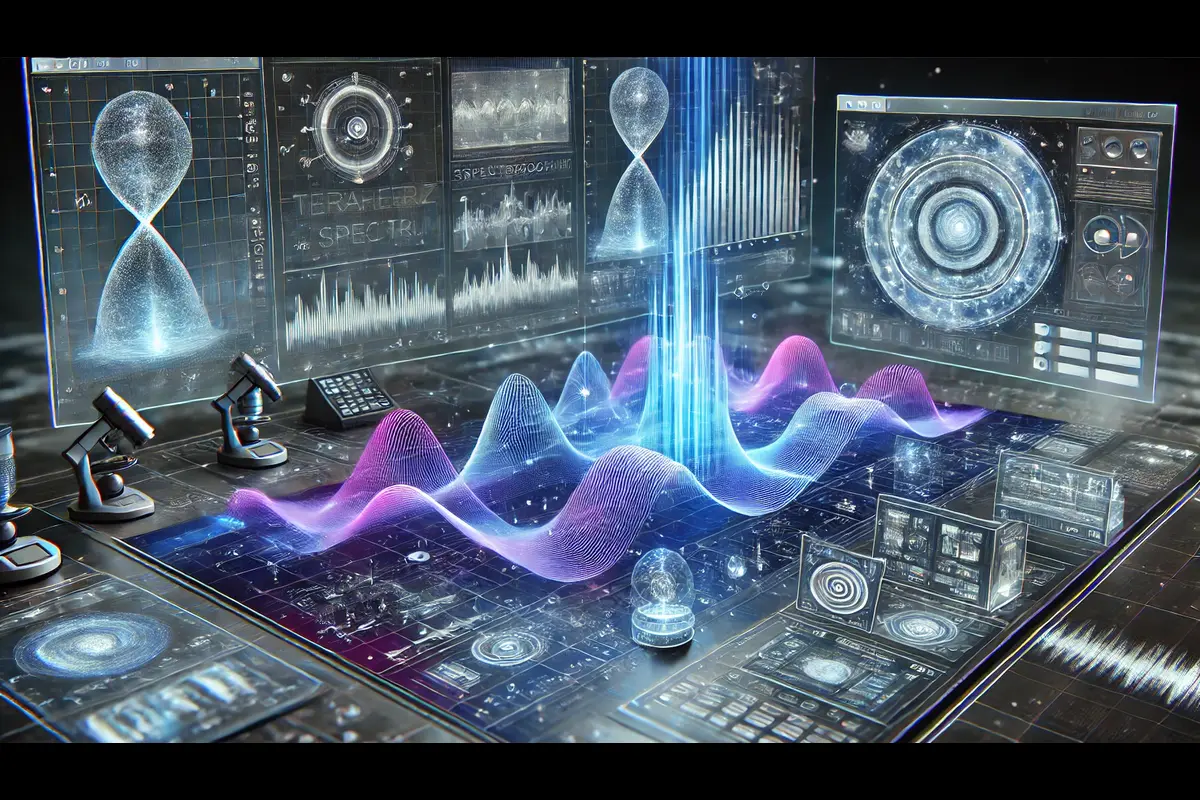AR Revolutionizing Retail: Product Visualization & Try-On
In the ever-evolving landscape of retail, technology continues to reshape the way consumers interact with products. One of the most groundbreaking advancements in recent years is the integration of augmented reality (AR) into the retail experience. It offers a bridge between the digital and physical worlds, providing consumers with immersive and interactive experiences that were once only imaginable in science fiction.

Bridging the Gap Between Online and Offline Shopping with AR
Traditionally, one of the challenges of online shopping has been the inability to physically interact with products before making a purchase. It has emerged as a solution to this problem, offering consumers the ability to visualize products in their own environment.
Enhancing Product Visualization
With Augmented reality, shoppers can use their smartphones or other compatible devices to superimpose virtual representations of products into real-world settings. Whether it’s furniture, clothing, or cosmetics, it enables customers to see how products would look and fit before making a buying decision. This level of visualization not only enhances the online shopping experience but also reduces the likelihood of returns, as customers can make more informed decisions about their purchases.
Transforming the Fashion Industry using AR
One of the most compelling applications of Augmented reality in retail is in the realm of product visualization. Virtual try-on experiences powered by Augmented reality allow customers to see how clothing items look on their own bodies without ever having to step foot in a fitting room. By simply pointing their smartphone camera at themselves, shoppers can virtually try on different outfits, experiment with styles and colors, and find the perfect look with ease. This not only streamlines the shopping process but also adds an element of fun and interactivity that enhances the overall customer experience.
AR in the Beauty Industry
Cosmetics brands are also leveraging Augmented reality technology to offer virtual makeup try-on experiences. With Augmented reality-powered beauty apps, customers can experiment with different shades of lipstick, eyeshadow, and blush in real-time, all from the comfort of their own homes. These virtual try-on experiences not only help customers find the perfect products for their skin tone and preferences but also serve as valuable marketing tools for brands looking to engage with their audience in new and innovative ways. By providing personalized recommendations and allowing customers to virtually try on products before purchasing, it is reshaping the beauty industry and enhancing the online shopping experience for cosmetics enthusiasts worldwide.
Enhancing In-Store Shopping Experiences
Beyond product visualization and try-on experiences, augmented reality is also being used to enhance in-store shopping experiences. Retailers are integrating Augmented reality features into their physical stores to provide customers with interactive product demonstrations, personalized recommendations, and immersive storytelling experiences. By blending the digital and physical worlds, retailers can create unique and memorable shopping experiences that drive customer engagement and loyalty. For example, Augmented reality-powered interactive displays can provide customers with additional product information, styling tips, and even virtual demonstrations, enhancing the overall in-store experience and encouraging customers to spend more time engaging with the brand.
The Future of Retail: Innovations in AR Technology
As augmented reality technology continues to evolve, the possibilities for its application in retail are virtually limitless. New advancements in Augmented reality hardware, software, and user interfaces are making it easier than ever for retailers to integrate these experiences into their customer touchpoints. From improved object recognition and tracking to more realistic rendering and immersive interactions, Augmented reality technology is becoming increasingly sophisticated and accessible.
One exciting area of innovation is the development of wearable Augmented reality devices, such as smart glasses and headsets. These devices offer hands-free augmented reality experiences, allowing users to seamlessly interact with digital content while remaining engaged with their surroundings. As wearable technology continues to mature and become more mainstream, we can expect to see new opportunities for immersive shopping experiences both online and offline.

Conclusion
Augmented reality is poised to revolutionize the retail industry by providing consumers with immersive product visualization and try-on experiences. From furniture and fashion to cosmetics and beyond, Augmented reality technology is reshaping the way people shop and interact with products. As retailers continue to embrace Augmented reality and explore its potential, the future of retail promises to be more interactive, engaging, and personalized than ever before.








